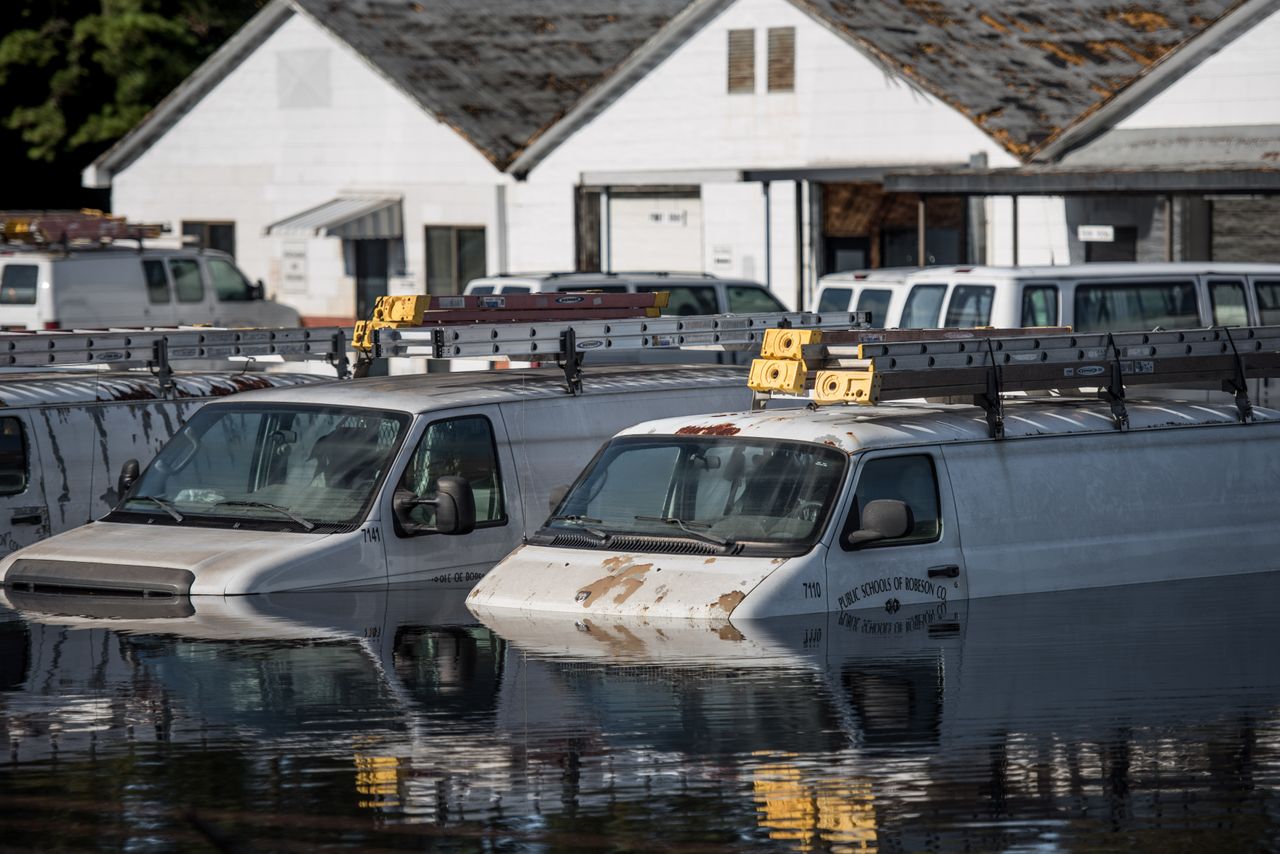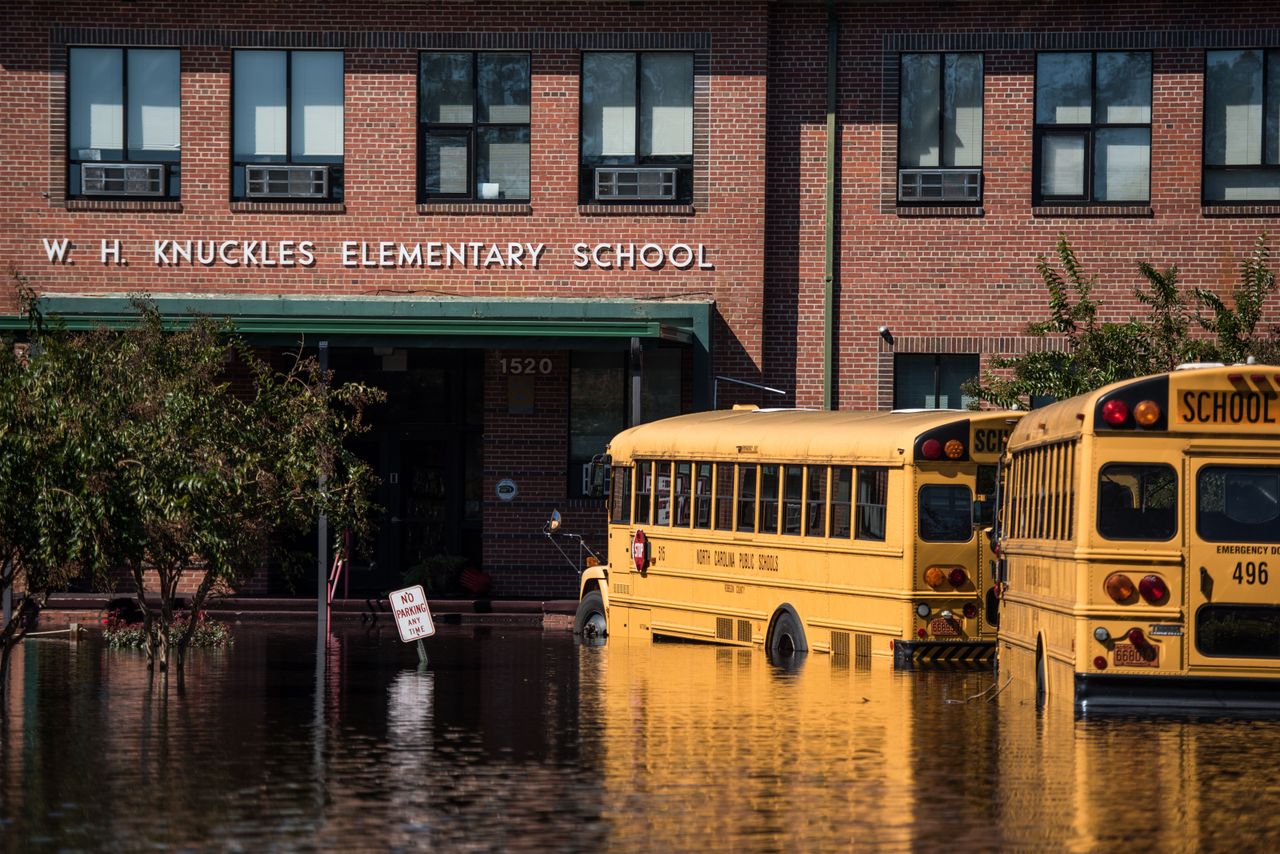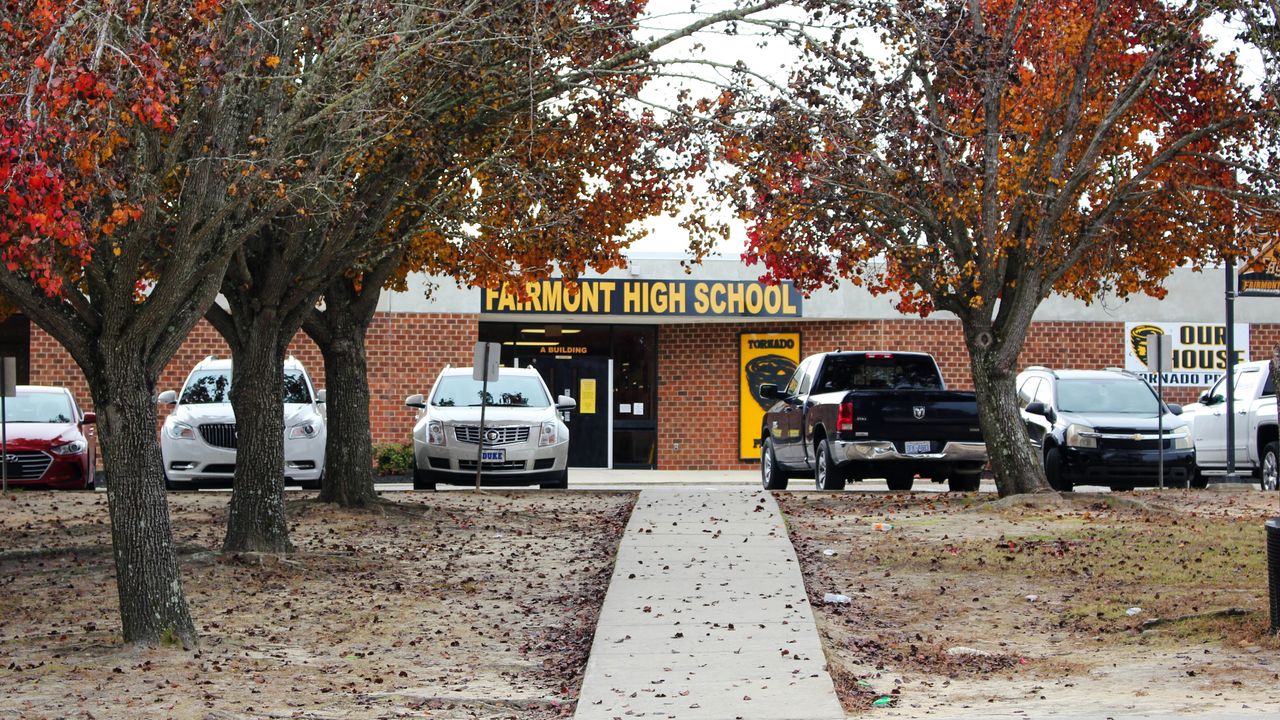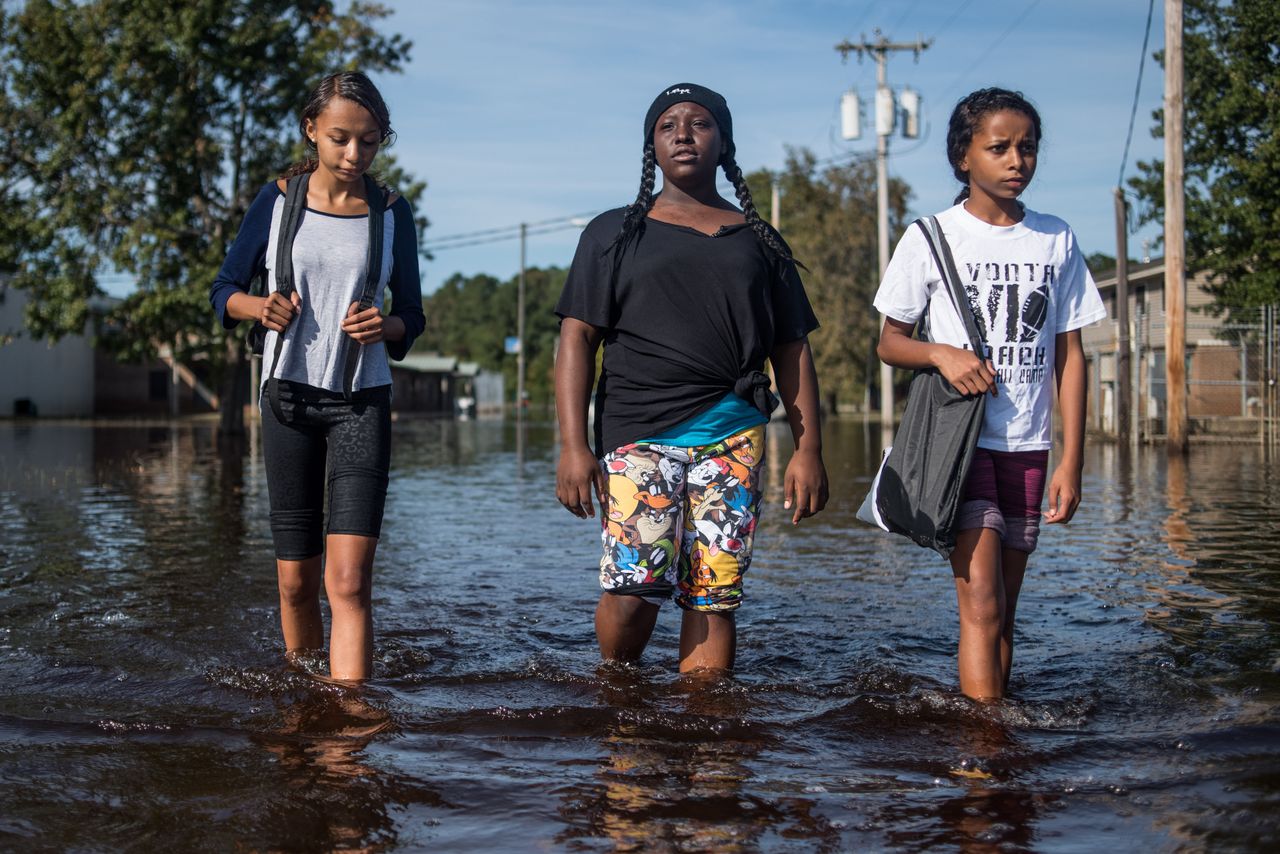What Will Be Lost is a series of reported stories and essays exploring the ways climate change is affecting our relationship to one another, to our sense of place, and to ourselves.
CARTERET COUNTY, NC — At Bogue Sound Elementary School, Callie Smith’s second graders start their days a little differently than they used to. Instead of focusing on morning assignments, the class spends the first 15 minutes of school playing board games, coloring and eating free breakfast delivered in cafeteria coolers. It has been this way since October 2018, when Hurricane Florence devastated their coastal community.
“We just let them play and talk and draw,” Smith said. “To do something that would mentally get them to realize that school is a safe place and that it’s OK to have fun.”
Bogue Sound is a part of the Carteret County school system, which was among the dozens hit by three major hurricanes in the last four years — Matthew, Florence and Dorian.
In 2016, Matthew caused severe inland flooding and power outages in some of the state’s poorest counties. Many areas remained underwater for weeks and roads were destroyed. Florence wrought more devastation in 2018. The slow-moving storm floundered over the coast for two days, dumping 20 to 30 inches of rain and causing widespread flooding far inland. Communities barely recovered from Matthew were overwhelmed once again. Dorian in September 2019 was less devastating, but it was another blow to an already struggling region.
Bogue Sound Elementary canceled classes for three days after Dorian, though they were able to make those up. Florence canceled classes for 15 days, days they ultimately didn’t get back. Governor Roy Cooper (D) waived those days to take pressure off of schools.
“We kind of joke that we get back to school, and then we get out a day or two for a hurricane,” Smith said.
As the climate is changing, so too are hurricanes. The Intergovernmental Panel on Climate Change’s 2014 Report said it is “virtually certain” that intense tropical cyclone activity in the North Atlantic has increased since the 1970s. Those storms are also getting more dangerous — sea level rise means more coastal flooding, and big, slow-moving, wet storms are dumping more water inland that swells rivers and lakes.
Florence, which caused nearly $17 billion in damage, caused closures at 49 of the state’s 115 school districts, according to the North Carolina Department of Instruction. Florence affected 35 school districts in 34 counties ― about a third of North Carolina’s students. Six hundred public schools, serving a total of 340,000 students, missed a week or more of classes. Five thousand students became homeless as a result of the storm.

“Florence was our doozy,” Smith said. The state’s major rivers spilled over their banks and flooded communities. Downed trees caused power outages, and schools contended with flooded classrooms and lingering mold.
“That’s the thing with a hurricane,” Smith said. “It wasn’t so much the actual storm that got us.” Instead, she said, damage from sitting water caused mold and mildew.
After Bogue Sound reopened, school staff had a meeting about what to anticipate from returning students.
“We had to talk about the fact that the kids had been through trauma,” Smith said. “The ones that stayed, some of them had a tree fall on their house while they were in it. Some of them couldn’t get back for days, and then when they got back, they’d lost everything.”
Upon students’ return, teachers gave them space to share their experiences from the storm with one another.
“You find as long as kids feel open to talk about things, they don’t bottle it up,” Smith said. “They realized that we were all in this together. We all shared this trauma, even though some people’s houses were OK and some weren’t.”
How Climate Change Hurts Kids’ Education
Smith said her students felt comfortable to talk about the storm and compare their families’ experiences. The open dialogue and change in their morning routine made the transition back to school easier. But addressing the long-term impacts of natural disasters on students is less straightforward.
Heather Randall, an assistant professor of sociology and demography at Penn State, co-authored a study in 2019 on the impacts of climate change on childhood educational outcomes. Her research focused on the tropics, where severe heat, drought and storms led to premature departures from school.
“Even if they didn’t end up losing that many days of school, they’re dealing with these stressors that could really end up affecting their schooling in indirect ways,” Randall said. “It’s hard to quantify that.”
Randall, using 85 censuses that spanned 1969 to 2012, found that socioeconomically disadvantaged children who experience high rainfall in early life tend to have lower educational outcomes. In West and Central Africa, low rainfall was also negatively associated with educational attainment. In East Asia, the study found similar effects on education from high temperatures in early life.
“It suggests that when you’re already poor, and you experience a bad hurricane, this can have a lasting effect on the child’s well-being and their educational and socioeconomic prospects,” Randall said.
Bogue Sound canceled classes three days before Florence made landfall in September 2018. Some of the community needed extra time to prepare, Smith said.
“Our particular population is funny,” she said. “You’ve got people who live on the water that are very wealthy, and then directly across the street, you’ve got trailer parks.”

Robeson County is about 200 miles inland from Bogue Sound, but has also dealt with the fallout of years of storms. At Fairmont High School, near the city of Lumberton, school social worker Zaveroy McDougal said they’re in recovery.
“People were repairing from Matthew, and then Florence came, and it just completely wiped them out,” said McDougal.
Matthew inundated Lumberton in 2016, and the storm’s intensity took everyone by surprise. Students’ houses flooded, and entire roads disappeared.
“You could turn a curve, and 10 feet of the road was just gone. I mean, deep as a pool. Gone,” principal Ronal Prater said.
Prater said the school district’s central office was basically condemned after the storm. Since then, they have moved locations twice. They planned to move to a permanent location in a school, but it was shuttered during consolidation.

Matthew closed Fairmont schools for three weeks. Then, 2018’s Florence inundated the area surrounding Fairmont. While schools like Fairmont High were spared from severe damage, flooding and damaged roads made it impossible for buses to get to students. The local schools were closed for 24 days.
Fairmont had an influx of students this year, Prater said, after attendance at nearby South Robeson High plummeted following the storm.
Students in impacted counties receive free breakfast and lunch, but Prater said that even without the program, about 85% of his students would qualify for free meals.
Robeson is the state’s second-poorest count. Its unemployment rate before Matthew was 6.8%, compared to the state average of 5%. Following Matthew, in January 2017, it had increased to 8.2%.
Matthew had been forecast to skim the inland region, so communities were wholly unprepared for the more than a foot of rain the storm brought. The roofs of some Robeson homes were still covered in blue tarps when Florence came two years later.
Kids And Schools Struggle To Adapt
When school was canceled for 24 days due to Florence, Fairmont senior José Alfonso Ramirez-Perez tried to keep up with his coursework. But the return to classes was still an adjustment.
“It was weird, after a certain amount of time, you get used to not going somewhere,” said Ramirez-Perez.
Ramirez-Perez is proud of his grades, and plans on going to North Carolina Agricultural and Technical State University for engineering.
“I usually study, even if we miss days,” he said, but he’s unsure how his classmates handled the long breaks.
Ramirez-Perez, with his parents and his four sisters, stayed with an uncle in Clarkton during Florence, but their home in Fairmont wasn’t damaged by either storm. Just down the street, though, he saw other homes flooded.
“The only thing that happened to me what the lights went out for a week, but it wasn’t anything major,” he said.

At Fairmont High School, the first semester was extended into the second to lessen the blow.
“Obviously with a short year, it makes it difficult for a child to get what they need,” principal Ronald Prater said. “There’s been a lot of disadvantages to these kids that’s not of their own making. They don’t have control over it, and we don’t either.”
Hanging in Fairmont’s front office is a certificate awarded for “continuous improvement” for the 2017-18 school year. Despite the storms, student achievement didn’t drastically change.
“I think you can attribute that to kids ready to get back to school, and teachers just buckling down and doing what they had to do,” Prater said.
At Bogue Sound, teachers had to condense the curriculum. Smith’s second graders skipped learning about folklore and Johnny Appleseed. Fall activities like baking apples were scrapped. Reading and math picked up where they left off. Students are tested on those subjects by the state, and their scores are used to evaluate teachers and schools.
Smith witnessed how the break impacted younger students, who had to essentially start the school year over again, learning teachers’ expectations and how to act in school.
In addition to a spike in separation anxiety, Danielle Burnash, a school psychologist based out of Dixon Elementary School in neighboring Onslow County, remembers her school’s kindergarteners’ confusion upon returning. Onslow was hit especially hard by Florence, and many schools in the county missed over 30 days.
“When the kindergarteners came back, because they were only in school about 11 days before the hurricane hit, they thought they were in first grade,” Burnash said.
In response to lost instructional time, teachers cut unnecessary learning activities, skipped field trips and downsized social studies and science. Only reading and math are measured on standardized tests.
“Teachers know that students’ performance is a reflection of them,” said Burnash. “They were hyper vigilant of that, and super focused on teaching that part of the curriculum.”
But in Onslow and Carteret, Florence didn’t bring down scores like they expected. A majority of schools in those counties either met or exceeded state academic growth standards.
Trying To Move Forward
A 2018 study published in the European Journal of Psychotraumatology estimated that about 175 million children per year will be affected by natural disasters attributed to climate change. That number is expected to rise as climate change progresses, yet little is known about how children cope with natural disasters.
“The mental consequences have been documented not only in the rates of post-traumatic stress symptoms and post-traumatic stress disorder, but also for depression and other mental health problems,” the study said.
McDougal, the school social worker at Fairmont, saw students trying to be resilient after the storms, and didn’t really express how much they were impacted.
“The majority of our kids just return to school with this ‘We’re OK’ sort of spirit about them, that resiliency, ‘We can bounce back,’ that sort of thing,” McDougal said.
Jill Brown, another social worker at Fairmont High, was working with younger grades during the past two storms.
“I got reports from elementary and middle school that if it got cloudy, a lot of the students would fear that it was coming back,” Brown said.
Ramirez-Perez said most of his classmates don’t talk about the storms when they return to school. He knows a few students that got displaced, he said, but no one really discusses it. When classes started again, they got right back into the curriculum.
“We missed a lot of work,” Ramirez-Perez said. “So we had to all work twice as hard.”
